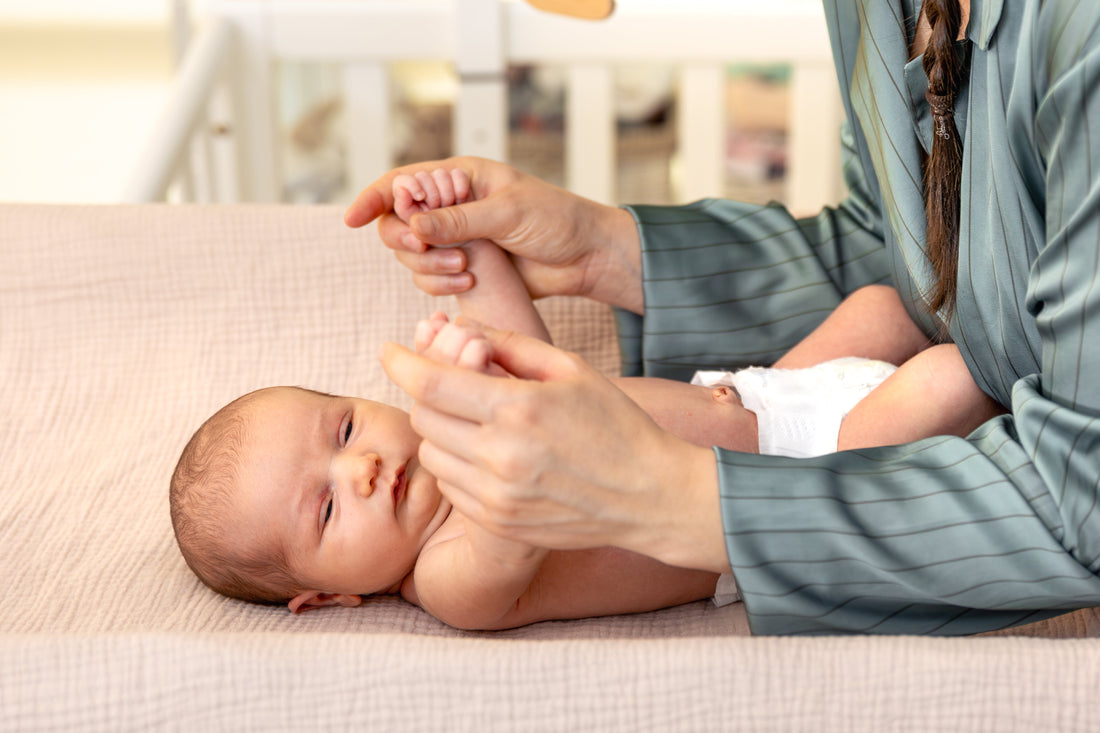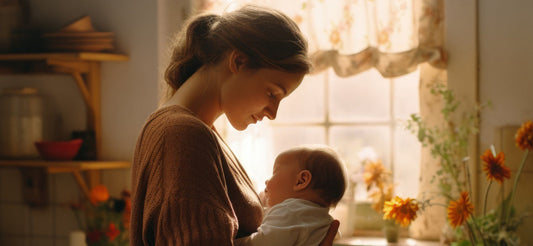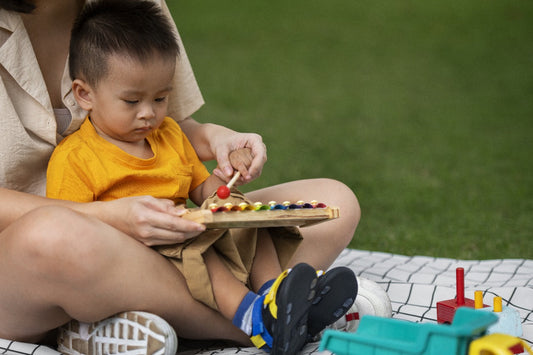
Best Natural Remedies for Common Baby Skin Conditions
Not all baby carriers are the same and fit. The best one for your child will depend on their age and size. That is where the Baby Carrier positions by age come in! It is like a magic number that lets you know when your baby is ready to ride in a carrier safely and efficiently.
This baby carrier guide 0–36 months will show you how to get around the Baby Carrier Age Limit. We will explore the various ways to carry your child, including the different types of baby carriers, and help you choose the best one for them!
Baby Carrier Position for Newborns (0–3 Months)
Newborn carrier positions need additional attention while they are carried since their neck muscles and spine are still maturing. The appropriate positioning helps them grow well and keeps them secure.
-
Recommended position: inward-facing, high hold
The baby should be face-to-face with you, high on your chest, and close enough to kiss. This enables them to regulate their respiration and body temperature and allows them to feel more connected.
-
Head and neck support is critical.
Newborns cannot move their heads, so ensure that the baby's head is nicely supported. They should not fall on their chest to keep their airways open.
-
Tips for safe babywearing with infants
Always make sure you follow the "T.I.C.K.S." rule: Close enough to kiss, in view, tight, keep chin off chest, and help back. Use carriers that are allowed for babies and stick to the weight limits.
Baby Carrier Position for Infants (3–6 Months)
As infants become sturdy, they get skillful with sitting up and holding their heads up, giving you the ability to make minor modifications in how you move them. As always, comfort and functional support are essential.
-
Still inward-facing, but a lower hold is possible.
Parents can now hold their kids a little lower on the chest, even though facing inward is still the best baby-wearing position. Make sure you can see their face and that their lungs stay open.
-
Signs the baby is ready for longer carry sessions.
Spending more time awake, demonstrating better neck control, and showing an interest in their surroundings are all signs of readiness. Watch for signs of pain or too much excitement and make changes as needed.
-
Carrier features to support the back and hips.
In the case of the M pose, use a baby carrier with a bigger, cushier seat that will enable the baby to sit with his hips in an optimal carrier position. The back support should be good so that their spine remains in a healthy position.
Best Positions for Sitting Babies (6–12 Months)
The core and neck muscles of the babies tend to become stronger between the ages of 6 months and 12 months. Below we have listed the best babywearing positions that help babies relate to their environment, yet feel safe.
-
Transition to outward-facing options
It is exciting to carry a baby outward facing when they can sit up on their own without support, typically at the age of 6 months, and they have full head and neck mobility. Short periods are enough to be in this position and prevent overstimulation.
-
When to use a hip carry for comfort
Hip holding lets babies see the world while staying close to the person caring for them. For interested kids, it's perfect, and the better weight spread makes it more comfortable for more extended periods.
-
Maintaining proper spinal alignment
Your baby should keep a standard "C" shape to their spine, even when you move them around. Ensure their legs are in the "M" position, with knees above their bottom, using slings to maintain this position.
Toddler Carrier Positions (12–24 Months)
As kids get bigger and move around more, carrier settings should change to accommodate their needs. For more extended wear, comfort and balance are essential for both the child and the adult.
-
Back carry: best for more extended wear or hikes.
Back carrying spreads the weight out properly and puts less stress on the caregiver's body, making it ideal for long-term use, travel, or outdoor activities like hiking. Make sure the baby is safely placed and can be seen.
-
Outward-facing is still fine for short durations.
Outward-facing poses are still fun for toddlers to explore their world, but only for short periods. If you use it for too long, you might experience excessive excitement or poor posture, so be aware of the signs of pain.
-
Hip and knee placement: ergonomic check
Keep the "M" pose with knees higher than the bum, even for children. As the infant grows, the carrier should support the thighs rather than allow the legs to hang down to preserve the hip and spine.
Older Toddlers (24–36 Months): Ideal Carrying Styles
As toddlers approach preschool years, they grow bigger and become more independent. Still, babywearing can be comfortable, intimate, and convenient, especially when traveling or on long journeys.
-
Why is back carry the safest and most ergonomic?
It is the safest carrier position for newborns to carry older kids on your back. It distributes the weight of the caregiver evenly across their back and hips, reducing stress and increasing mobility for both the parent and the child.
-
Signs your toddler still benefits from babywearing
Even babies who are good at walking might need help. Some signs are feeling tired after long walks, wanting to be close, or needing comfort in places you don't know well. Babywearing creates a safe and comforting place.
-
Choosing a carrier that supports a higher weight
Purchase a toddler carrier with stronger straps and a larger seat base to support the child's increased size and weight. Note the weight capacity (usually up to 45 pounds) and ensure that the back and hip support is decent.
3 Key Features to Look for by Age Group
The best baby sling for your child will depend on their age and growth needs. To ensure safety, comfort, and support, each stage needs its own set of features.
-
Adjustable support for newborns and infants
In the case of toddlers and babies, you should find carriers that have head support and inserts that can be adjusted to suit their small and delicate necks. These characteristics help you maintain a good balance and a safe position.
-
Breathability and durability for toddlers
Toddlers make more heat and move around more, so carriers made of long-lasting, open materials are best. When worn for a long time or while playing, these fabrics keep both adults and children comfy.
-
Certifications and weight range importance
The bag must always be of the correct safety ratings and able to carry a certain weight. The fact that a carrier is the appropriate size for your child reduces the chances of injuries.
Common Mistakes Parents Make with Carrier Positions
For safety and comfort, it's essential to know how to wear a baby carrier. Common positioning mistakes made by parents can harm both their baby's health and their own.
-
Placing the baby too low or too tightly
One error is placing the baby too low on the caregiver's body or tightening the sling. This may be difficult to breathe, painful, and strain the caregiver's back.
-
Using outward-facing for too long
Outward-facing carries allow the babies to explore, but keeping them in this position during extended periods may be overstimulating and fail to provide the support they need on their backs, particularly in young babies.
-
Skipping carrier adjustments as the baby grows
There is a growth in the size and support requirements of babies. Without replacing the straps, inserts, or settings, it may result in poor posture, pain, and even safety hazards to the parent and the child. Changes and checks ought to be conducted regularly.



